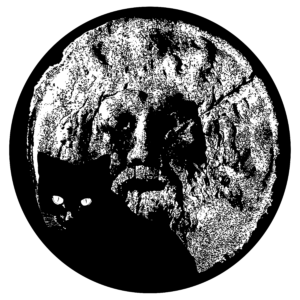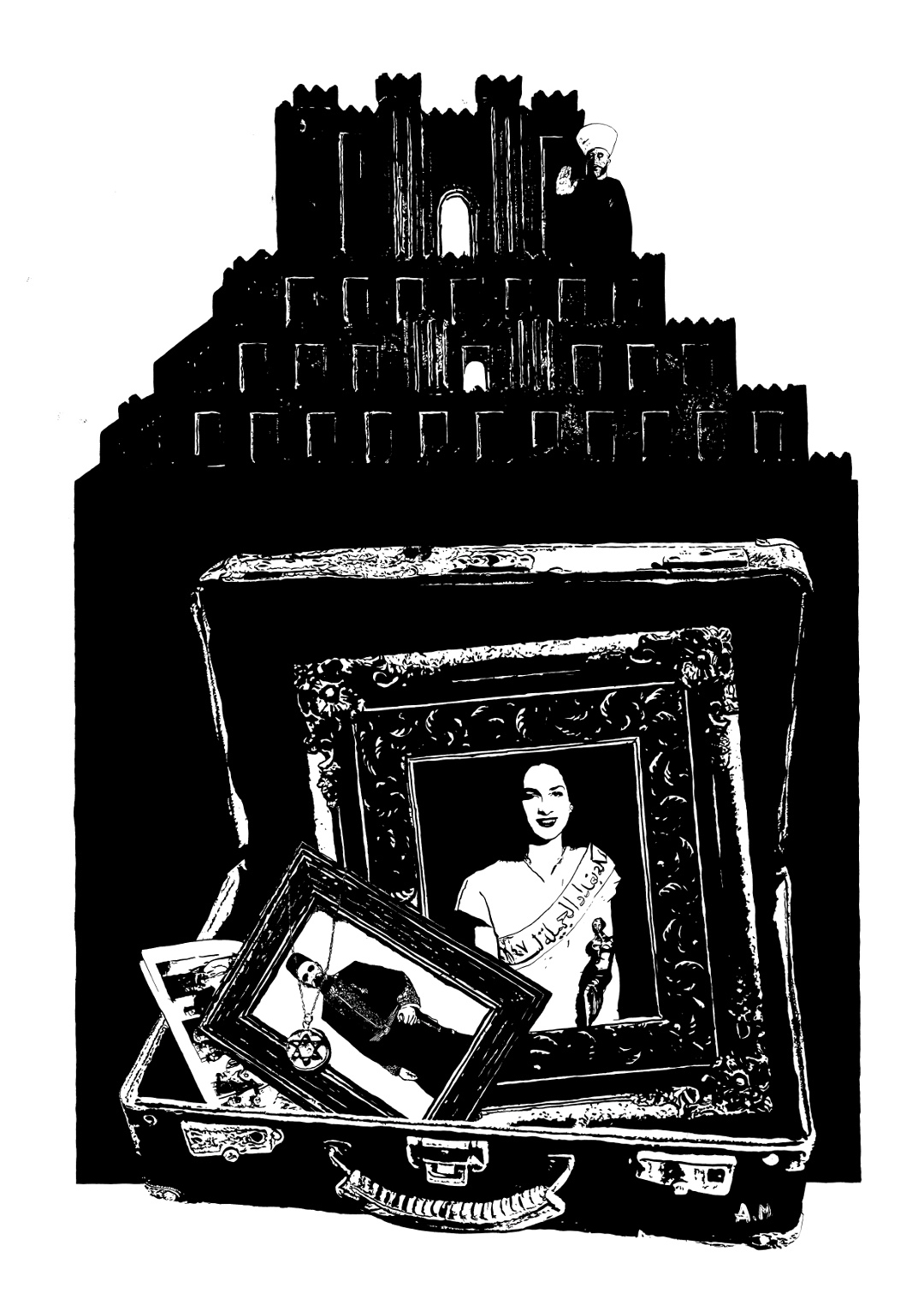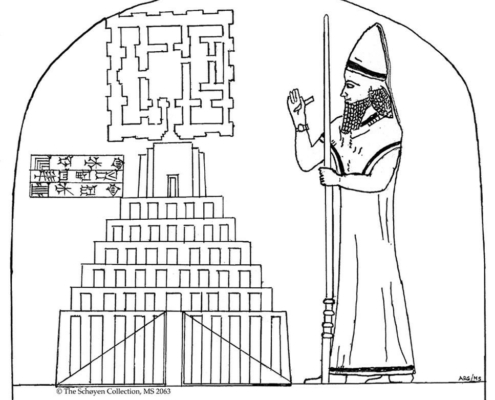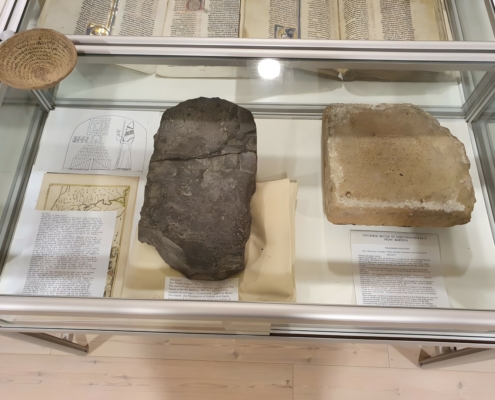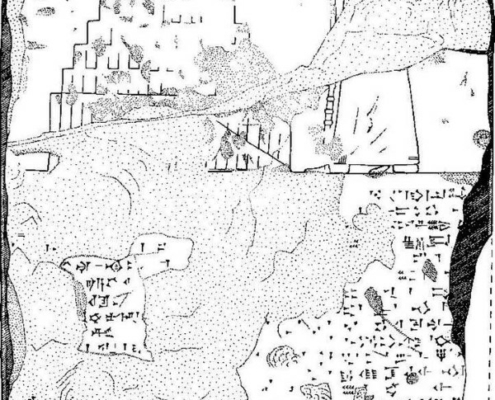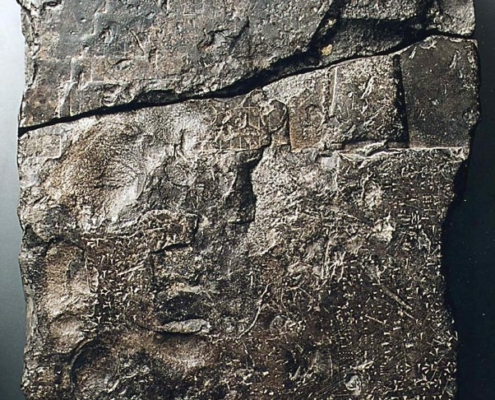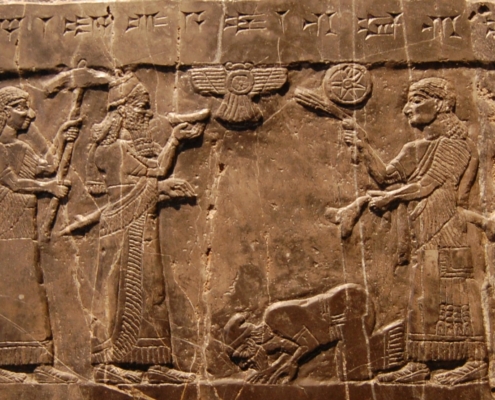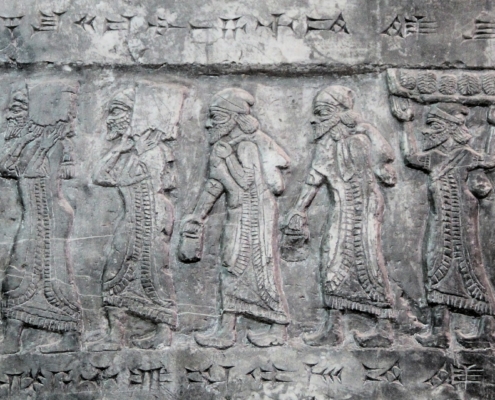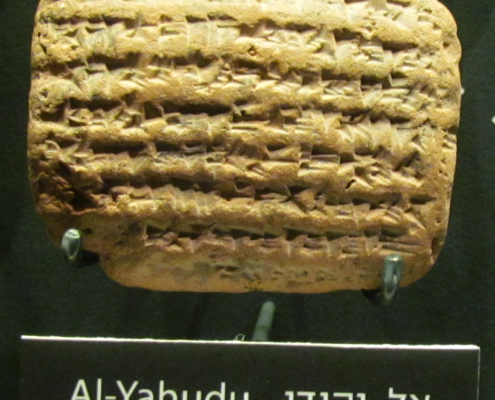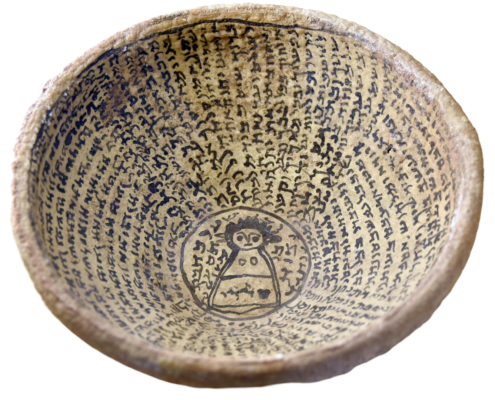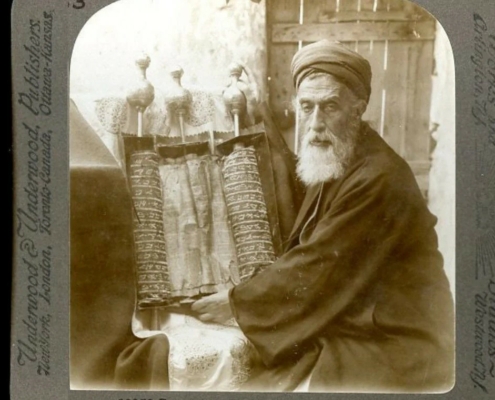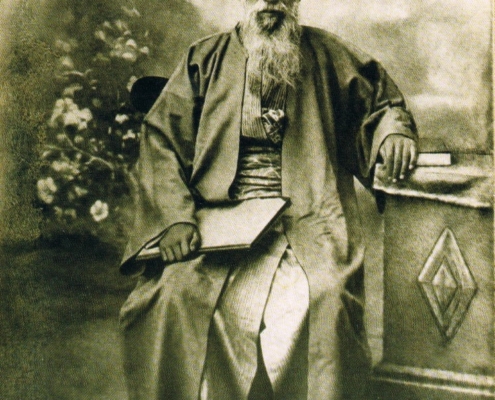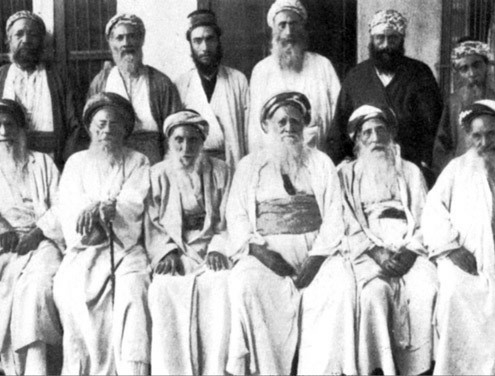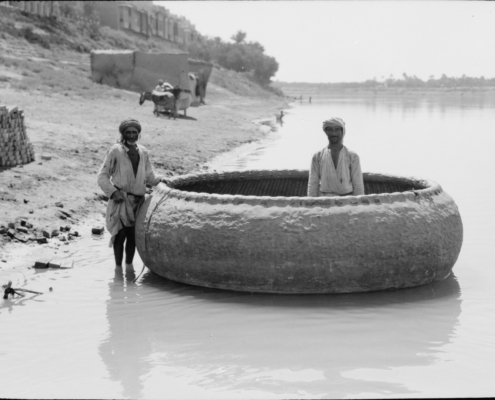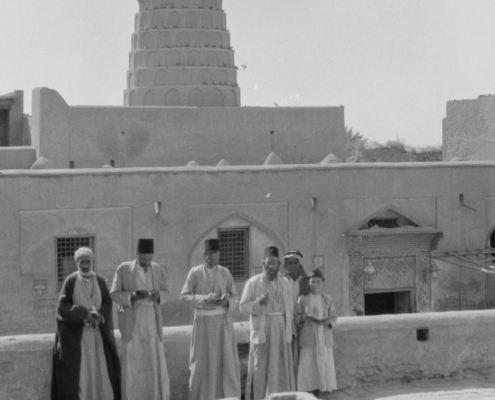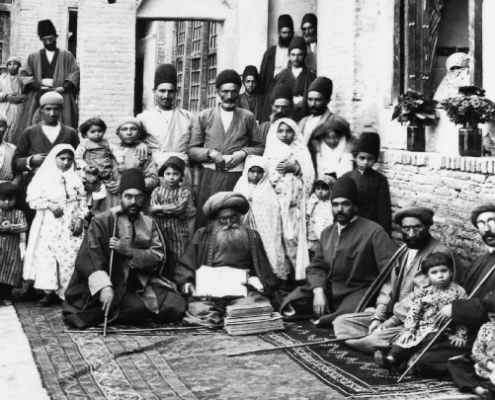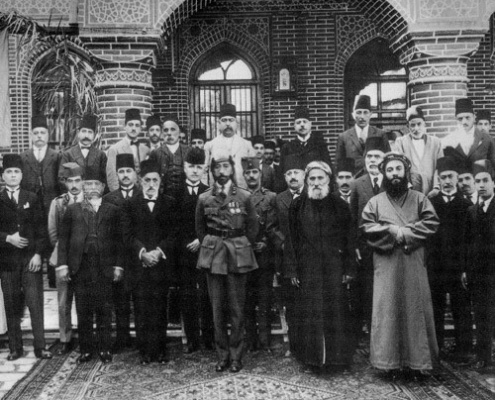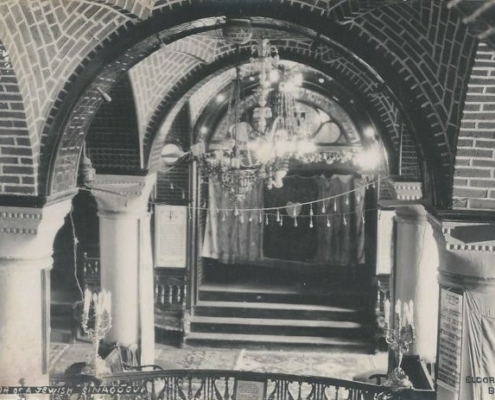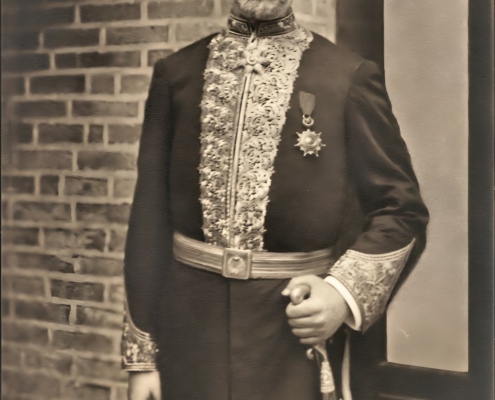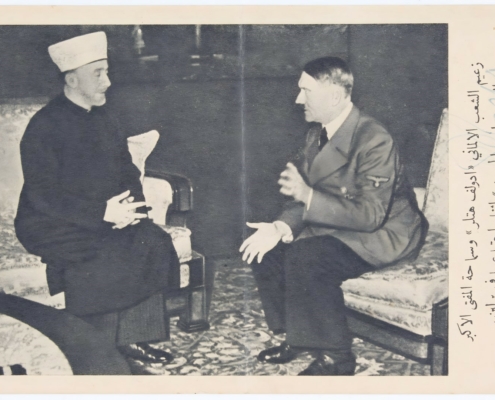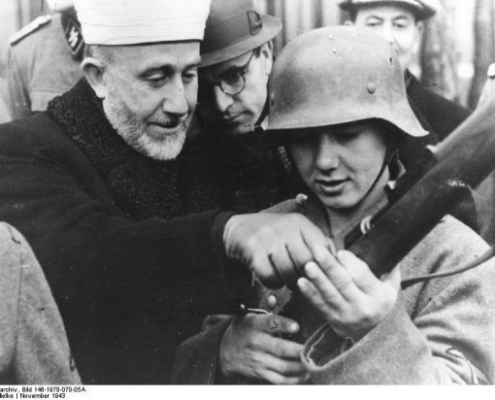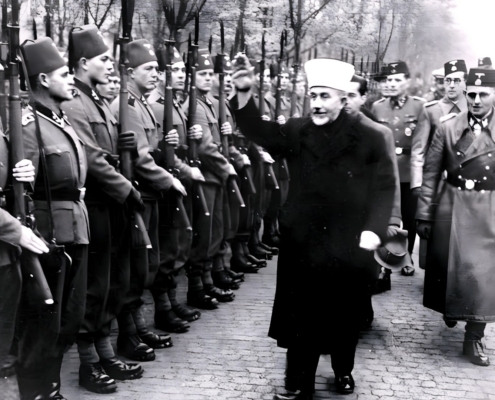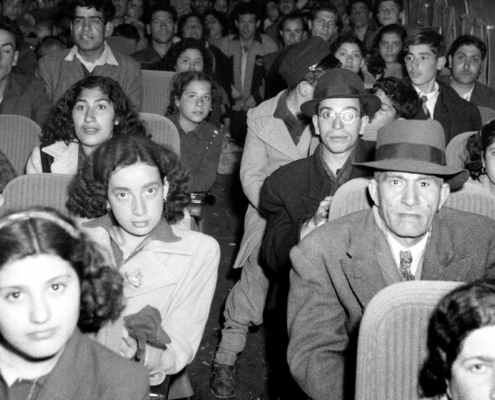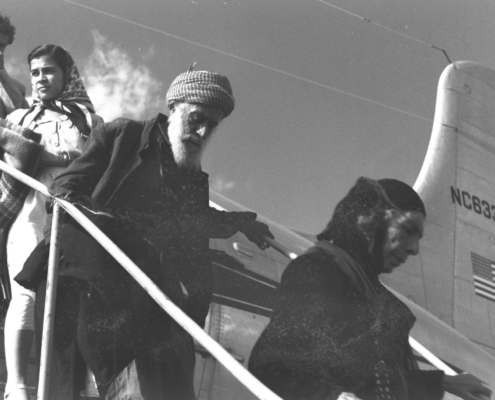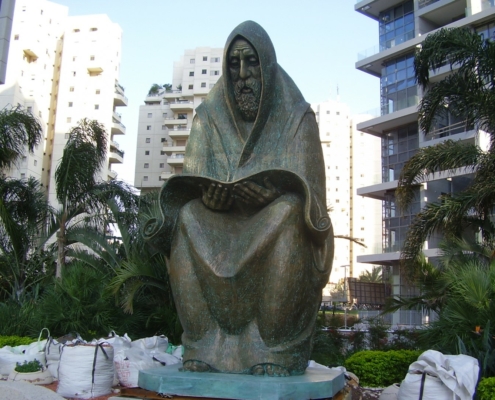“West of Eden”, Alexandre Mitchell, 2024 (50 x 70 cm, Indian ink)
Who is not familiar with the reggae song On the rivers of Babylon? It was inspired by a biblical psalm (137:1-4) about the devastated Jews uprooted from their kingdom of Judah and deported to Babylon, in Mesopotamia (the land between the rivers), at the beginning of the 6th century BC.
By the rivers of Babylon, we sat down and wept, remembering Zion. It was there that we hung our harps on the willows, because those who took us captive asked us for a song; those who had robbed us asked us to be joyful, saying: ‘Sing us one of the songs of Zion’. But how do you sing the Lord’s song in a foreign land?
The title of the painting, West of Eden, symbolises the Jews forced into exile once again, this time from Babylon. After living for more than two millennia in Babylon/Baghdad, they were forced to leave the lands between the Tigris and Euphrates rivers in the late 1940s. By 1951, there were virtually no Jews left in Iraq.
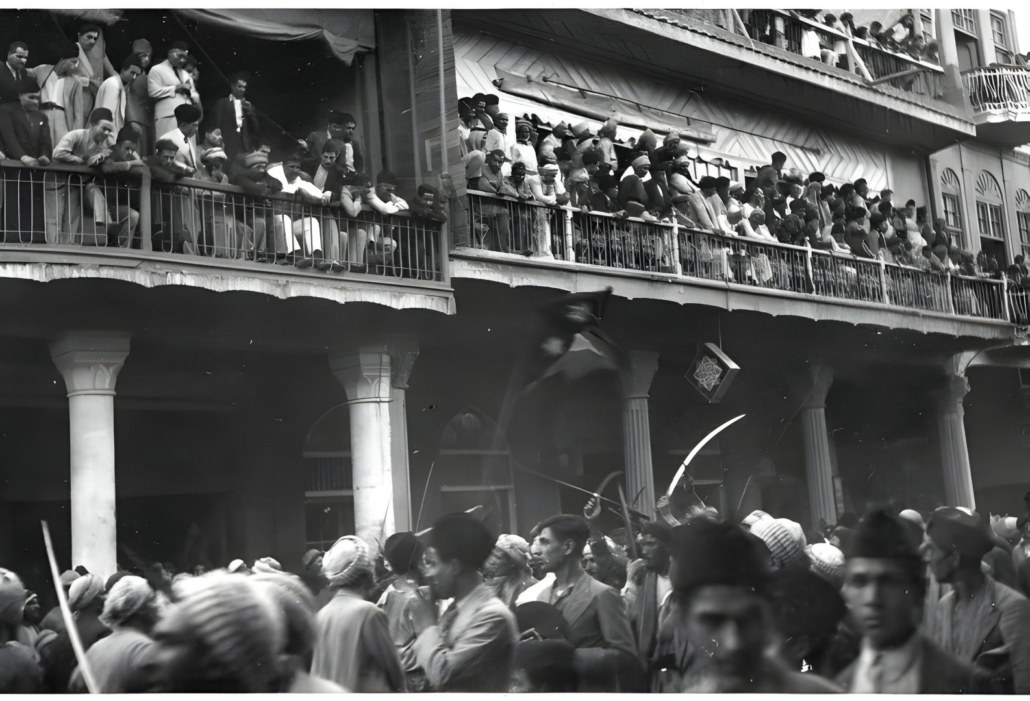
The Fahrud, June 1-2, 1941
On 1 June 1941, Baghdad’s ancient Jewish community was savagely attacked by a mob of pro-Nazi Arab supporters who swept through the city with impunity and police complicity for two days, until the British army finally deigned to enter the city to restore the rule of law. This infamous event is known as Fahrud, which means ‘violent dispossession’ or ‘pogrom’ in Arabic. Jewish homes and businesses were looted and defenceless men and women were attacked with the aim of killing them. 128 men and women of all ages were murdered in two days, more than 600 were injured and an unknown number of women were raped. In the aftermath, hundreds of Jews fled to Iran, Lebanon or Syria, where they had relatives. But most remained in Baghdad, Basra and the many Iraqi villages, because these Jews had no other homeland than Iraq.
Because of the immense trauma caused by the Fahrud, even the most influential Baghdad Jews, whose ancestors dated back more than a thousand years, or even two thousand years, now regarded their Arab neighbours with fear and mistrust.
In 1951, just three years after the creation of the State of Israel (on 14 May 1948), 135,000 Iraqi Jews were forced into exile, with nowhere else to go but Israel. They had to surrender their Iraqi passports never to return, give up all their possessions and were allowed only one suitcase per person. They had lived in Babylon/Baghdad for over a thousand years before the birth of Mohammed and were expelled from Iraq as vagabonds.

Black Obelisk: Yehu in front of Shalmaneser III
Ironically, it was the Babylonian ruler Nebuchadnezzar II who had originally brought them to Babylon. He had destroyed the first Jewish temple in Jerusalem and captured most of the elite of the kingdom of Judah in the early 6th century BC. He moved the population in the hope that within a generation or two the Jews would cease to be a rebellious exception and become loyal servants of the empire. This was normal practice when dealing with warlike peoples in great empires. The Babylonian captivity lasted until 538 BC, when Cyrus the Great allowed them to return to their kingdom of Judah and even provided them with enough funds to rebuild their temple. But some of the Jewish population chose to stay in Babylon, because it was now their homeland. They stayed and prospered. It was here that the Talmud and all the great sages of antiquity were born. Some of the greatest books of Hebrew scholarship were produced in Iraq. They witnessed the rise and fall of all the empires, Neo-Babylonian, Achaemenid, Greek, Roman, Parthian, Sassanid, Arab, Ottoman, British, and actively contributed to the building of Iraq’s independence in 1932.

King Faisel visits Baghdad Jewish Community
The invasion of Iraq by the Arabs in the 7th century and the Islamisation of the country had enormous consequences for minorities such as Jews, Christians, Yezidis, Mandaeans and many others. They were tolerated and allowed to practise their faith within the limits of dhimmitude, i.e. they had to show public deference to Muslims, could not hold public office, could not testify against Muslims in court, and of course had to pay a heavy price. In the end, the colonial era under British rule was a period of freedom for all these minorities.
The rise of National Socialism in Germany and its abject ideology was welcomed by some Middle Eastern personalities who approached the Axis either to counter the power of the British Empire in the Middle East or because they hoped to emulate Hitler’s ideology, tactics and national policy towards the Jews. Amin_al-Husseini (the Grand Mufti of Jerusalem in the 1920s until he was removed from office) was at the forefront of both anti-British and pro-Nazi actions. In 1937, he fled to fascist Italy, then settled in Berlin for his daily pro-Nazi radio broadcasts in Arabic. He officially met Hitler and Goebbels, and had his own Bosnian Muslim militia trained by the Nazis.
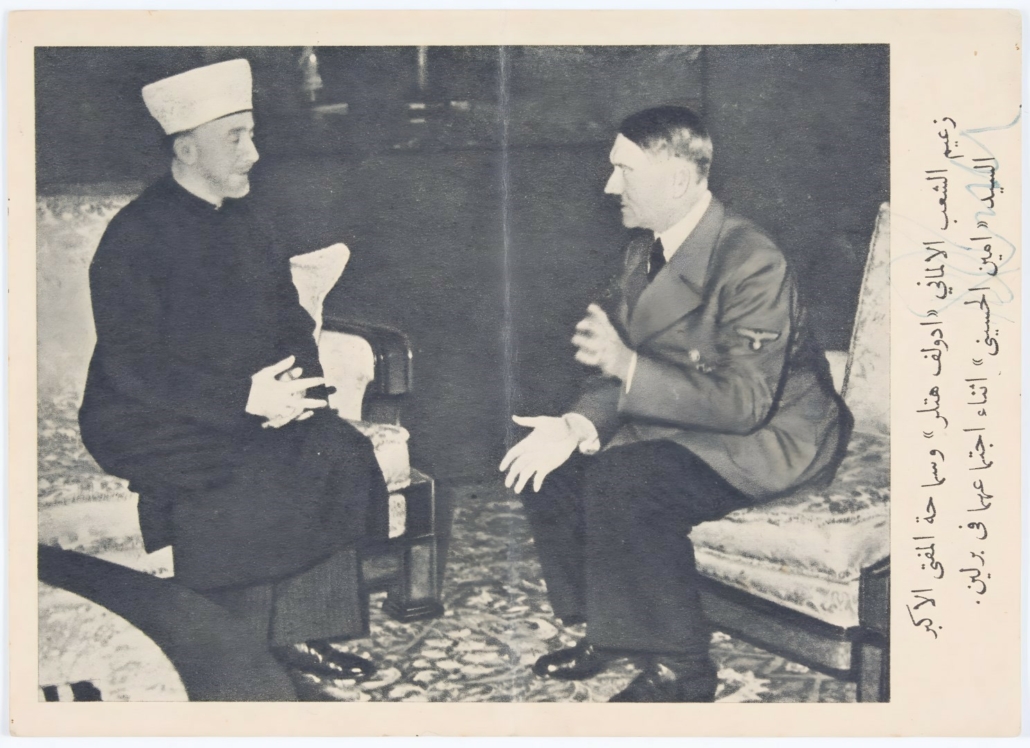
Mufti of Jerusalem and Adolf Hitler
On 1 March 1944, speaking on Radio Berlin, al-Husseini declared: ‘Arabs, stand up as one and fight for your sacred rights. Kill the Jews wherever you find them. That pleases God, history and religion. In this way you will save your honour. God is with you.’
Rashid_Ali_al-Gaylani, a pro-Nazi, anti-British Iraqi nationalist politician from one of Baghdad’s leading families, staged a military coup against the pro-British government in Iraq on 2 April 1941. He was supported by four senior army officers and the former Mufti of Jerusalem, Hajj Amin al-Husayni, leader of the failed Palestinian (Arab) uprising. The pro-Nazi coup threatened the British route to India. On 19 April, British army units from India landed in Basra, while troops of the British-led Arab Legion (Habforce) moved towards eastern Iraq from Transjordan. At the end of May, the Iraqi regime collapsed and its leaders fled. King Faisal was restored to the throne, but the British did not want to give the impression of taking sides in domestic politics, so the army did not enter Baghdad. It was at this point that al-Kailani and al-Husayni intoxicated the minds of the losers by telling them that the Jews constituted a veritable fifth column and that they had helped the British to win, which led to the Fahrud, the horrific pogroms of 1 and 2 June 1941.
The painting shows a suitcase, because when the Jews were forced to leave, they were only allowed one suitcase per person. The woman in the frame is Renée Dangoor, a beautiful young Jewish Baghdadi who was crowned Miss Baghdad in 1946. Can you imagine such a thing today? The man in the other frame, in ceremonial dress, is Sir Sasoon Eskell, a famous Jewish statesman who was instrumental in the creation of the modern State of Iraq. Underneath is a picture of a book about Jewish scholars, because there has been so much scholarship for 2,500 years. Behind it all, a view of the Tower of Babel – Etemenanki (in Akkadian), inspired by the reconstruction work of the German scholar Robert Koldewey, who was in charge of the Babylon excavations from 1899 to 1917.
Hidden at the very top, as black as his soul, is the Mufti of Jerusalem, the Islamic leader of the future Palestinians (Arabs) who imported Nazism into the Middle East. His open palm is reminiscent of the footprints left on Jewish houses during the fahrud in 1941.
The painting recalls both that the Jews were exiled from Judea in 597 BC (or 586 BC) to Babylon and that 135,000 Iraqi Jews were forced to return to exile in the late 1940s. They had lived in this country for almost 2,500 years.
Illustrations
Gallery (1) Babylon, Babel-Etemenanki, Jehu before Shalmanazar III, Akkadian tablet on the Jews of Al-Yahudu (Babylon), Aramaic/Mandean magic bowl.
Gallery (2) The Jews in Iraq
Gallery (3) Mufti of Jerusalem, with Adolf Hitler, with his Bosnian Muslim troops trained by the SS
Gallery (4) The Fahrud, Jewish Baghdadi immigrants on the plane to Israel
